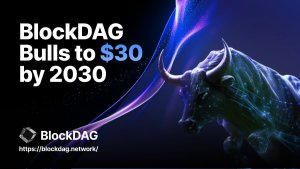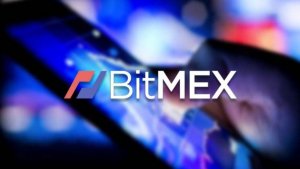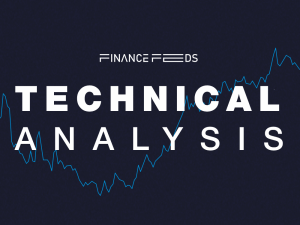How to Avoid DeFi Lending Liquidation Risks as Bitcoin Enters New Bull Market Territory
Bitcoin’s price finally broke its previous all-time high on March 5th, surging past $69,200 and currently trading above $72,000. The last time BTC traded anywhere near this price level was in November 2021.

Bitcoin’s price finally broke its previous all-time high on March 5th, surging past $69,200 and currently trading above $72,000. The last time BTC traded anywhere near this price level was in November 2021.
However, while this spike in price has definitely increased the net worth of spot BTC holders, not everyone is in a celebratory mood. Shortly after BTC touched its previous all-time high, there was a violent sell-off which saw the price tank by around 14%, triggering over $1 billion in liquidations across the larger digital asset market.
To some extent, this sell-off was anticipated given that Bitcoin’s notional open interest (OI) had soared by over 23,000 BTC within a span of a week. Additionally, the funding rates also hit levels last seen three years ago.
Nonetheless, even some of the best crypto traders could not resist the allure of adding leverage as BTC’s price nudged higher and higher. The result? A knife-catching contest that wiped out overleveraged positions within a span of hours.
Effective Risk Management in DeFi Lending and Borrowing
Similar to overly exposed margin trading and futures positions, open DeFi lending positions are also not spared when crypto prices take a sudden nosedive.
There have been multiple liquidation events, including the infamous MakerDAO liquidation on Black Thursday, when close to $8.3 million was liquidated after ETH’s price dropped by 45% while MakerDAO’s native token MKR plunged by almost 60% within a day.
To provide some more context, the total value locked (TVL) across DeFi lending platforms is currently at $36.61 billion, up from $22.2 billion at the beginning of 2024.

This growth is a testament that more and more crypto users are gradually returning to DeFi lending and borrowing platforms to put their idle capital to use.
However, while DeFi lending and borrowing platforms like Aave, Compound, and MakerDAO have opened up a new avenue to access loans by placing digital assets like ETH and WBTC as collateral, the caveat is that these DeFi loans are over-collateralized.
Borrowers can only secure a lower loan amount than the value of the collateral they put up; for example, MakerDAO’s minimum collateralization ratio is 150% (for ETH), which means a borrower looking to access a $100,000 DAI stablecoin loan would have to lock up $150,000 worth of ETH.
Although an effective way to protect DeFi lending protocols from becoming insolvent during, the over-collateralization requirement beats the logic of traditional loan structures where the loan-to-value ratio (LTV) is typically below 100%; in most cases, it is around 80%.
On the brighter side, there are several ways through which DeFi users can minimize their liquidation risks. One of them is by operating on lending platforms with a more friendly collateralization requirement. Nolus protocol is a great example of the DeFi lending platforms whose lending ecosystem is based on an undercollateralized model.
Built on the Cosmos SDK, this DeFi protocol borrows from the concept of traditional leasing, allowing borrowers to access a loan of up to 3x (150%) their collateral’s worth. Also, unlike typical DeFi lending platforms, Nolus’ DeFi lease model stores both the down payment and the loan provided in an automated smart contract to act as collateral, significantly reducing the risk of liquidation.
It is also advantageous to have enough gas fees, especially if you mostly trade on Ethereum. At the height of the DeFi bull run in 2021, Ethereum gas fees went as high as 500 Gwei. What this means is that if one wanted to instantly liquidate a losing position when the ETH blockchain was busy, yet they only had enough ETH to purchase 200 Gwei, then they were probably out of luck in closing the transaction swiftly.
Given that on-chain DeFi activity seems to be picking up again, having a good amount of ETH at any time could help you prevent all your assets from being liquidated when the network is too busy and everyone is likely looking to cash out.
DeFi lending and borrowing platforms also feature automated liquidation functions, which operate in a similar way to the limit or stop-loss orders on Central Limit Order Book (CLOB) exchanges. In fact, it was one of the pioneering functions integrated by DeFi lending platforms such as MakerDAO and Compound. Instead of stressing over every single candlestick, you can alternatively use the automated liquidation function to trigger partial liquidations and avoid your c-ratio from falling below the liquidation threshold.
Conclusion
The total crypto market capitalization is currently hovering around $2.8 trillion, slightly below its all-time high of $3 trillion, yet the interest in Bitcoin is still nowhere near the 2021 bull market levels according to Google Trends. Unfortunately, most of the time it is a zero-sum game. For every trade in profit, there is a countertrade in the red. The only way to make the most of a potential crypto bull market is by implementing effective risk management strategies to reduce one’s downside exposure in case of extreme liquidation events.
The subject matter and the content of this article are solely the views of the author. FinanceFeeds does not bear any legal responsibility for the content of this article and they do not reflect the viewpoint of FinanceFeeds or its editorial staff.









